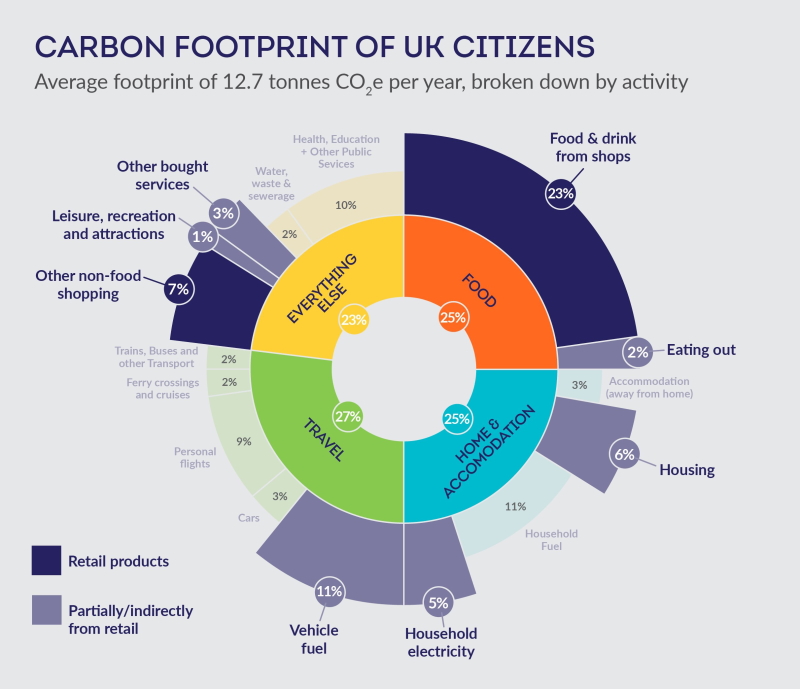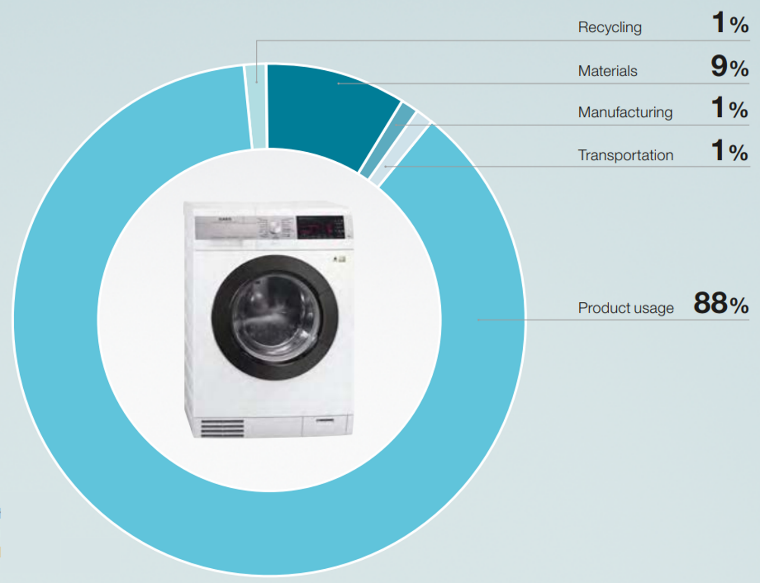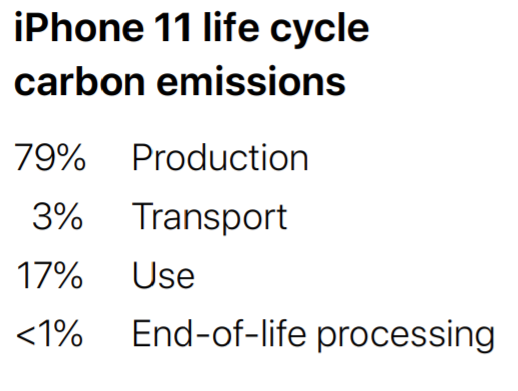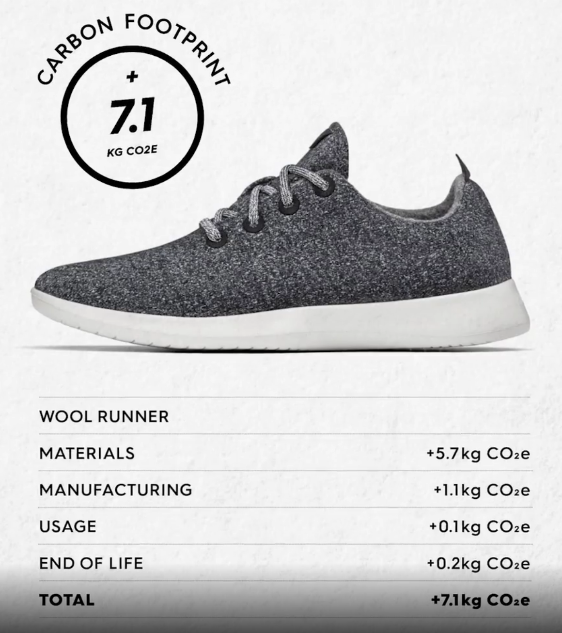8.1
Emissions overview
On a global basis, household consumption accounts for almost three-quarters of greenhouse gas emissions.[125] The need for changes in household consumption is even more pressing in countries such as the UK where disposable incomes are higher and there is an urgent need to identify and implement solutions to promote engagement and action from citizens.
For high-income European countries, the largest contributions to household consumption footprints come from car and plane mobility, animal-based foods, and heating.[126] Gross emissions associated with consumption in the UK in 2017 were 773 MtCO2e.[127] The average UK resident’s greenhouse gas footprint is 12.7 tCO2e per year although there is considerable variation due to differences in lifestyles, and socioeconomic factors.[128],[129]

Figure 8.1a: Retail share of emissions overlaid onto data from ‘What we buy” presentation from Lancaster University &
Small World Consulting, presented to UK Citizens Climate Assembly (2020)
There is significant variation between different types of product in where greenhouse gas emissions are produced across the product lifecycle. For many products, the customer use phase accounts for the most significant proportion of greenhouse gas emissions. Figures 8.1b-e demonstrate the variability in emissions for the use phases of several different products. The impact of customer behaviour on the footprint of every product depends considerably on the emissions intensity of raw materials, the requirements for electrical power, the need for washing or other care, and the importance of appropriate treatment at end-of-use.

Figure 8.1b: Washer-dryer relative life cycle emissions, from Electrolux Annual Report 2013
Figure 8.1c: iPhone 11 relative life cycle emissions, from Apple Product Environmental Report
Figure 8.1d: Allbirds Wool Runner life cycle emissions, from Allbirds Sustainability
Figure 8.1e: Levi’s 501 Jeans relative life cycle emissions, from The Life Cycle of a Jean
Overall, the following areas represent significant opportunities for reducing greenhouse gas emissions through upstream activities relating to customers.
[125] Behaviour change, public engagement and Net Zero (2019). The Committee on Climate Change.
[126] Behaviour change, public engagement and Net Zero (2019). The Committee on Climate Change.
[127] UK’s Carbon Footprint 1997 – 2017 (2020). Defra.
[128] What we buy, and land use, food and farming (2020). Climate Assembly UK.
[129]The distribution of household CO2 emissions in Great Britain (2013) Joseph Rowntree Foundation